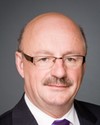All kinds of consultation mechanisms exist, and they vary by department. My colleagues will perhaps add some clarification. The mechanism at Health Canada is often recognized as one that is highly appreciated by communities. The department has created two committees that meet periodically, one for the anglophone community in Quebec and the other for francophones outside Quebec.
Citizenship and Immigration Canada has created an equivalent one for francophones outside Quebec. Both officials and community representatives sit on the committee. Together, they define the objectives and sometimes determine program mechanisms.
At Heritage Canada, the mechanisms are somewhat similar. There is a coordination committee for anglophones from Quebec and a coordination committee for francophones outside Quebec. Beyond that, for a host of specific problems—that is the case for culture, for example—there are working groups made up of community members and departmental representatives, and sometimes several departments are involved at once.
Culture is an area where there is a lot of this kind of cooperation. For example, my colleagues from Heritage Canada sit on working groups with people from the Canada Council for the Arts and people from the communities, and the National Arts Centre, or Telefilm Canada, etc. There are countless models that vary from one to the other, but they have been set up over the past five or six years and continue to evolve.




